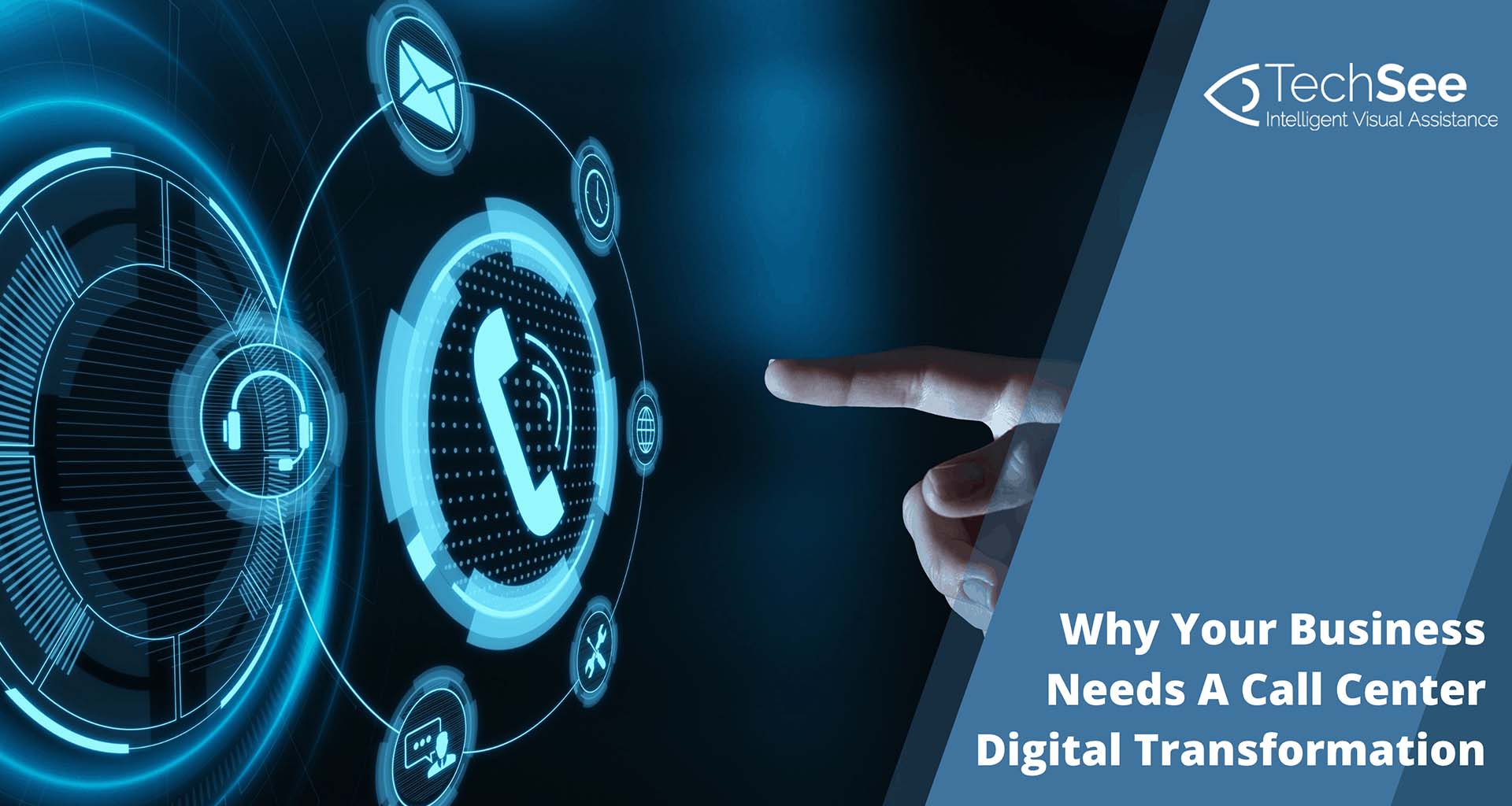Contents
- The Importance of a Call Center Digital Transformation
- Digital vs Analog
- What is POTS?
- How does a digital device work?
- What are the Advantages of a Contact Center with Digital Channels?
- The Future of Call Centers: Digital Transformations
- Will humans have a role in the contact center of the future?
- Digital Contact Center Strategy: What to Consider
- Higher satisfaction at lower costs – digitizing customer care
- How to make the shift to becoming a contact center of the future
Traditional call centers just aren’t as effective anymore. As more and more enterprises go through a call center digital transformation, we need to understand why digitization is so important in the future of call centers, and how to start the process.
When you consider the tech evolution that has occurred in the last 15 years, it’s mind blowing. We’ve been moving at such a rapid pace that it’s almost impossible to remember how things ‘used to be.’ From clunky desktop computer towers and giant mobile phones, tech inventions of the past seem almost comical, but it is because of those giant leaps forward that we can enjoy the modernized world we live in today.
The Importance of a Call Center Digital Transformation
The digitization of our lives can be felt in the smallest of everyday actions like using your cell phone to the most advanced examples of transmitting information from outer space. But the most important aspect of digitization is yet to be exploited: getting all of your digital channels and inputs to speak in one unified digital language. The impact of a digital call center will be immeasurable in the lives of your customers. This is because when we combine the ability to harness communication skills with AI and deep learning, we gain access to information systems with unparalleled abilities.
Digital vs Analog
As an example of how far technology has advanced, let’s take a quick look at the concept of an analog phone – after all, some of you reading this may not have experienced one. Analog technology has been around for decades. In the case of the telephone, analog is now comically known as POTS (Plain Old Telephone Service).
What is POTS?
Plain Old Telephone Service (POTS) is the name for the technology that refers to the process of taking audio signals like our voices and translating those signals into electronic pulses.
How does a digital device work?
In contrast, the technology behind a digital device breaks down the human voice into binary code or a series of ‘0’s and ‘1’s. The receiving device then reassembles that code into the original signal or set of words as is the case with a phone conversation. This conversion to binary language is the first step towards a unified digital language. It gives a digital “name” or fingerprint to every sound, image or typed word.
What are the Advantages of a Contact Center with Digital Channels?
See below for three benefits of implementing a call center digital transformation.
Improve Call Center Efficiency
Speed is the name of the game when it comes to improving efficiency, and digital forms of communication will be the only way in which contact centers of the future can move faster.
In a digital call center, software and AI can help detect a customer’s issue by recognizing keywords typed into a chat box. They can then either direct the customer to an online help resource or immediately route a call to an agent who can handle that specific issue. This means less aggravation and therefore a better experience from a customer perspective, as no one likes to be bounced from agent to agent or to have to extensively search for the right resource.
In today’s COVID-19 era, the less direct contact between customer and provider the better, safer and easier it is for everyone. Digital communication channels also offer more security and reliability with high-level encryption software designed to minimize the risks of hacking.
A Better Customer Experience with a Digital Call Center
Nowadays, customers want to be able to get service from any number of digital channels and platforms, not to mention any device. Omnichannel support refers to engaging with customers on their favorite digital channels including:
- social networks
- chat
Soon this type of support will no longer be a luxury for businesses but a necessity for those that want to maintain their customer bases.
Moreover, the customer experience is no longer bound by the typical 9-5 office hours. When support is needed at 2 am, customers are not going to wait. Additionally, next-gen customers like to be able to quickly resolve problems for themselves digitally by using a self-help center and intelligent FAQ section. As a result, we find that a robust contact center with digital channels that is available 24 hours a day, 7 days a week, 365 days a year will provide exactly what they need.
Big and Small Data
Data is key to progress. We use it for insights and to improve customer service and experiences among many other things. Digital data is easy to gather, keep, analyze and understand. Having as much of your data as possible in a digital form will help you get the most out of it.
When your business undergoes a call center digital transformation, every interaction, website click, chat session or other touch point becomes a data point that can be processed and analyzed, and referred back to retroactively.
Slice and dice the data in any way you like and what you’ll end up with is invaluable insights that can help your business and optimize products and procedures. Analytics can be used by every department in a business from marketing and sales all the way through to customer service and HR.
The Future of Call Centers: Digital Transformations
On the day that all of your communication channels’ incoming data speak the same digital language, the power of unified communication (across sound, sight and typed data) will transform your business!
You’ll now have the ability to put this data to work. With a contact center digital transformation, all of your data will speak the same language, and eventually different channels will be able to communicate using this unified digital language.
Clear communication is the foundation for advancement, and digital language provides the basis for this communication. It supports an endless cycle of service optimization: collect data, analyze it, and enrich the AI technology. This leads to it identifying more patterns and providing smarter, faster solutions.
Will humans have a role in the contact center of the future?
It’s obvious that this digitization powered by revolutionary help desk technology won’t fully replace the human side of things. Although much of the tech that is powering the digital revolution is extraordinary, it is still in a stage of infancy. Although it is mature enough to use, it will continue to evolve and improve.
For at least the foreseeable future, actual human support agents still need to have a presence in your digital call center because even the most intelligent FAQ section can’t solve every problem. By experiencing a call center digital transformation, you are empowering your live human agents to do their jobs better, as well as keeping everyone safer.
Customers can have more and more of their needs met remotely, minimizing direct contact – a win for everyone during COVID-19. You will gain higher satisfaction at lower costs by digitizing customer care.
All the data that has been collected and analyzed from contact centers’ digital channels is providing agents with a large quantity of relevant information.This ultimately leads to increased customer loyalty due to improved benefits such as:
- more efficiency
- better resolutions
- more opportunities for meaningful engagement
Digitizing customer experience is the future of call centers!
Digital Contact Center Strategy: What to Consider
When transitioning from a traditional, analog call center to a contact center with digital channels, you need to keep in mind the end game: offering knowledge-filled digital service solutions that enable quick, painless resolutions to customers on their terms and preferred platforms or devices.
However, transitioning to a digital approach for customer service requires a multipronged approach that needs to be thought out and implemented strategically. Make sure to have a call center manager who is capable of guiding the team through the contact center digital transformation.
Higher satisfaction at lower costs – digitizing customer care
It starts with your customers and how they interact with your business. Listen to their needs and provide higher satisfaction at lower costs by digitizing customer care. For some businesses it may be expanding first into service channels on social media, while for others it may be enhancing self-service portals with 24/7 chats. Your goal and priority is to attend to your most urgent customers’ needs, while providing them with the ultimate digitized customer experience that best fits their lifestyle.
How to make the shift to becoming a contact center of the future
Even the smallest change to your call center can have a huge impact. Carefully choose how to implement the new digital contact center strategy so that your customers and employees get the most benefit from the transition. However, don’t wait too long because your competitors are already fast on the path to a customer service and call center digital transformation and you don’t want to be left behind in the dust.







